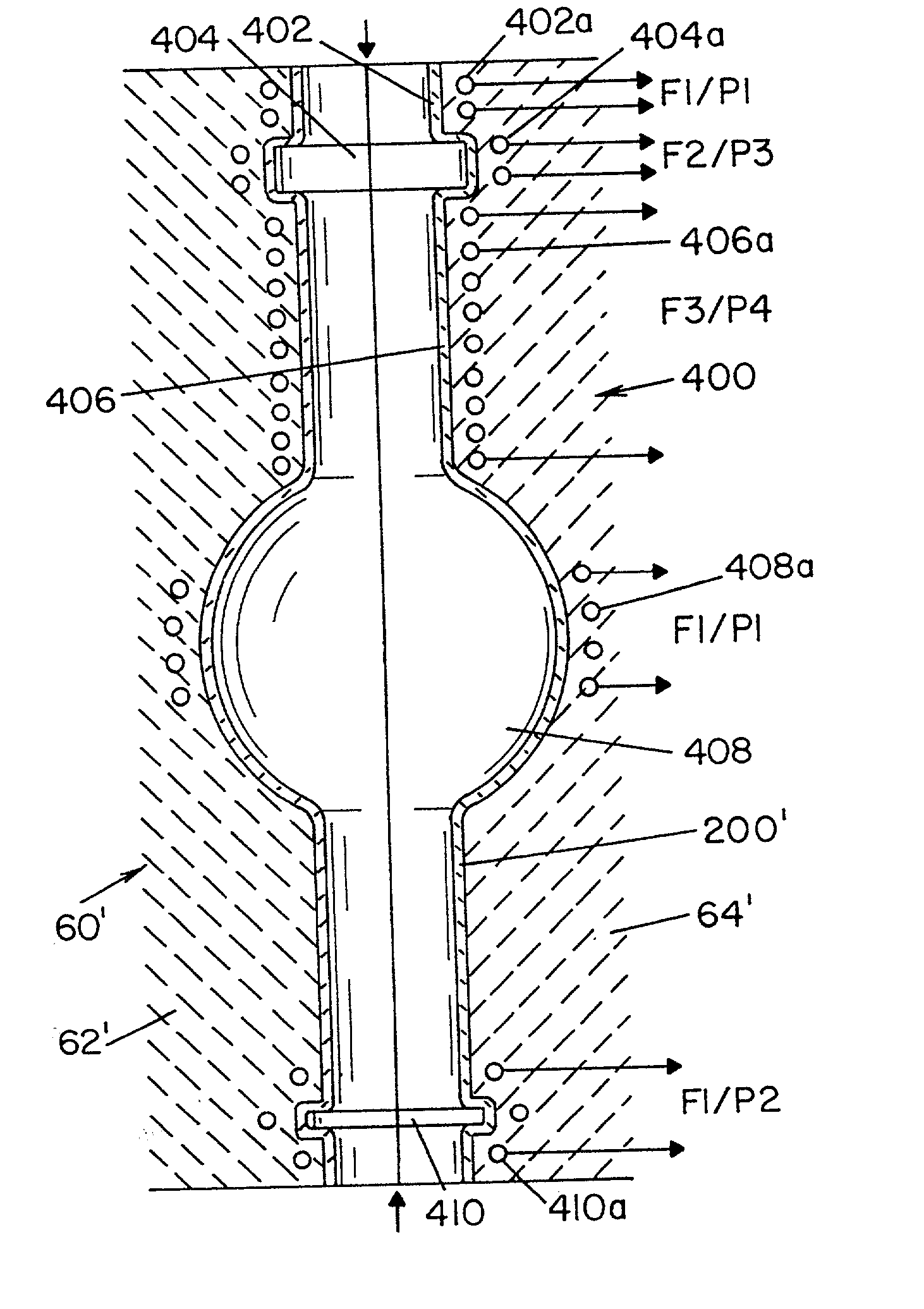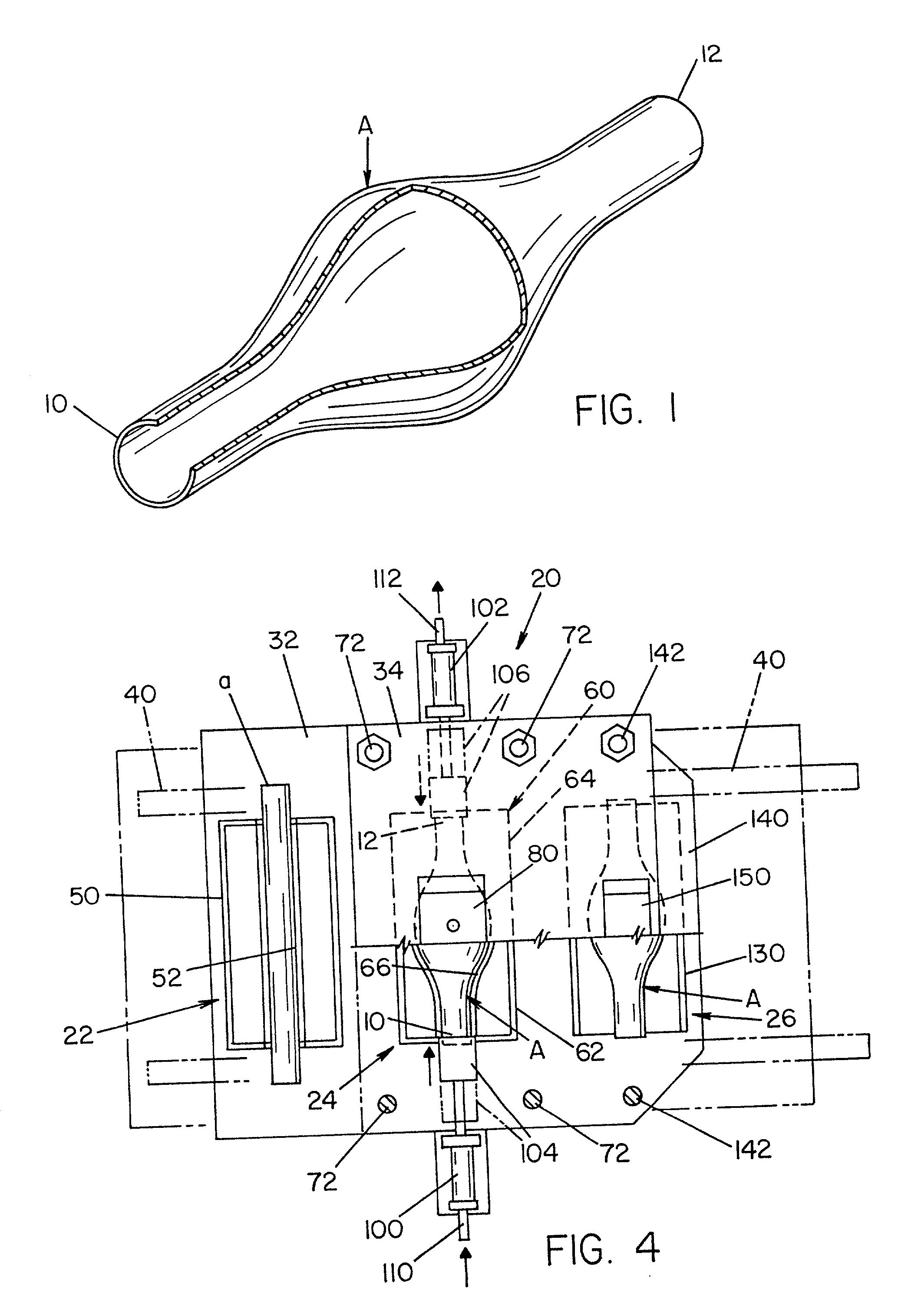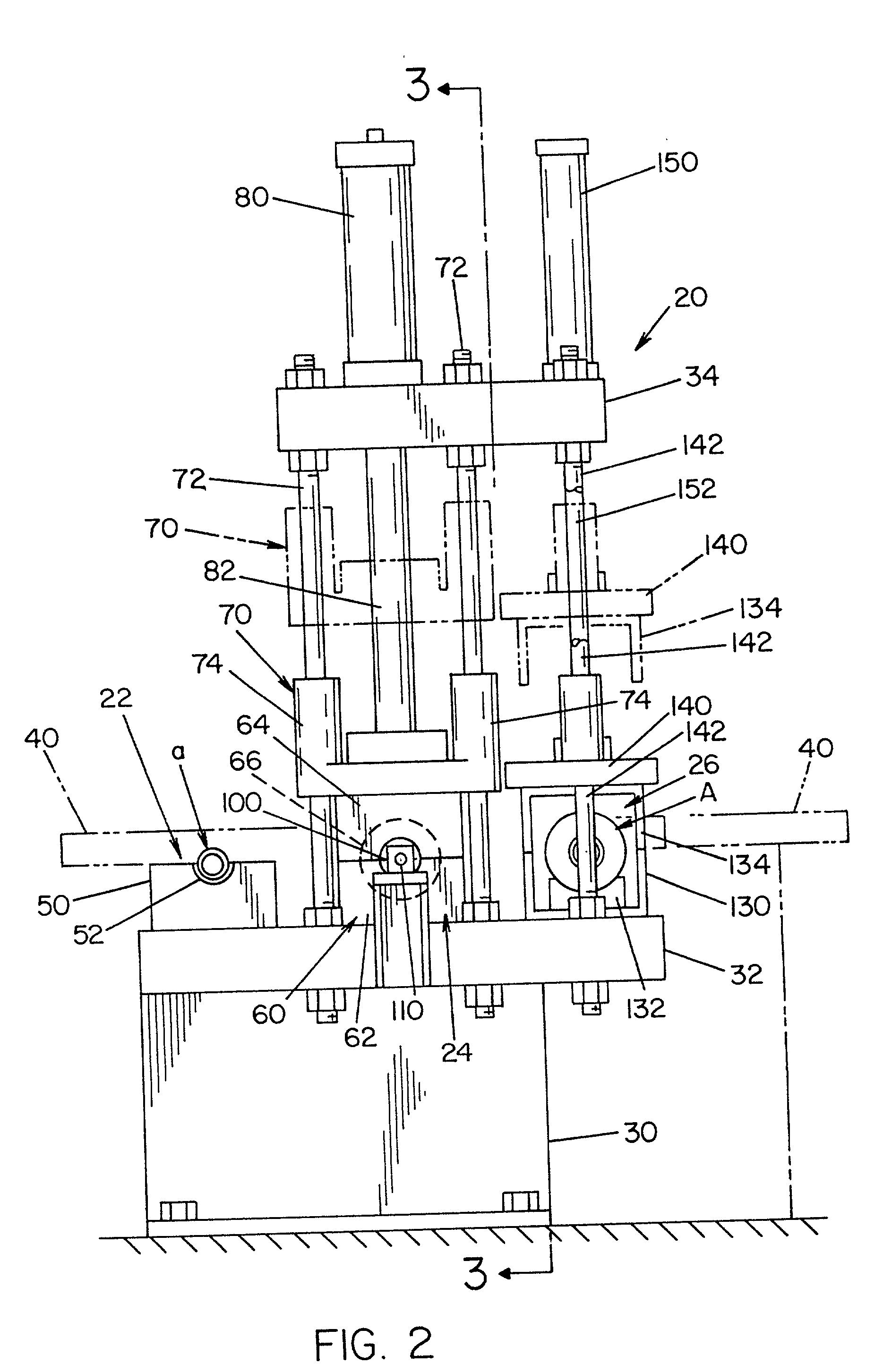Method of forming a tubular blank into a structural component and die therefor
a technology of structural components and tubular blanks, which is applied in the direction of shaping tools, furnaces, heat treatment apparatuses, etc., can solve the problems of inability to use the die members used in plastic blow forming for forming steel, large equipment to direct high pressure liquid into the tubular blanks, and short life of die members, so as to enhance the mechanical properties of the resulting structural components and quick expansion of the blanks
- Summary
- Abstract
- Description
- Claims
- Application Information
AI Technical Summary
Benefits of technology
Problems solved by technology
Method used
Image
Examples
Embodiment Construction
[0063] Referring now to the drawings wherein the showings are for the purpose of illustrating the preferred embodiments only and not for the purpose of limiting same, FIG. 1 shows a finished tubular structural component A formed by using the preferred embodiment of the present invention as schematically illustrated as machine 20 in FIGS. 2-4. This part is illustrated as a quite simple shape for ease of discussion. The preferred shape is the workpiece processed by the apparatus shown in FIGS. 22-26. However the disclosure associated with the simple shape of component A applies to all shapes. Machine 20 includes an inlet station 22 for preprocessing a plugged tubular blank which will be described later. This preforming operation may involve bending the tubular blank axially into a preselected general contour or profile as shown in FIG. 22 for the preferred workpiece formed by the invention. The preprocessing of tubular workpiece or blank may involve preforming or heating. Preheating i...
PUM
| Property | Measurement | Unit |
|---|---|---|
| pressure | aaaaa | aaaaa |
| pressure | aaaaa | aaaaa |
| pressure | aaaaa | aaaaa |
Abstract
Description
Claims
Application Information
 Login to View More
Login to View More - R&D
- Intellectual Property
- Life Sciences
- Materials
- Tech Scout
- Unparalleled Data Quality
- Higher Quality Content
- 60% Fewer Hallucinations
Browse by: Latest US Patents, China's latest patents, Technical Efficacy Thesaurus, Application Domain, Technology Topic, Popular Technical Reports.
© 2025 PatSnap. All rights reserved.Legal|Privacy policy|Modern Slavery Act Transparency Statement|Sitemap|About US| Contact US: help@patsnap.com



